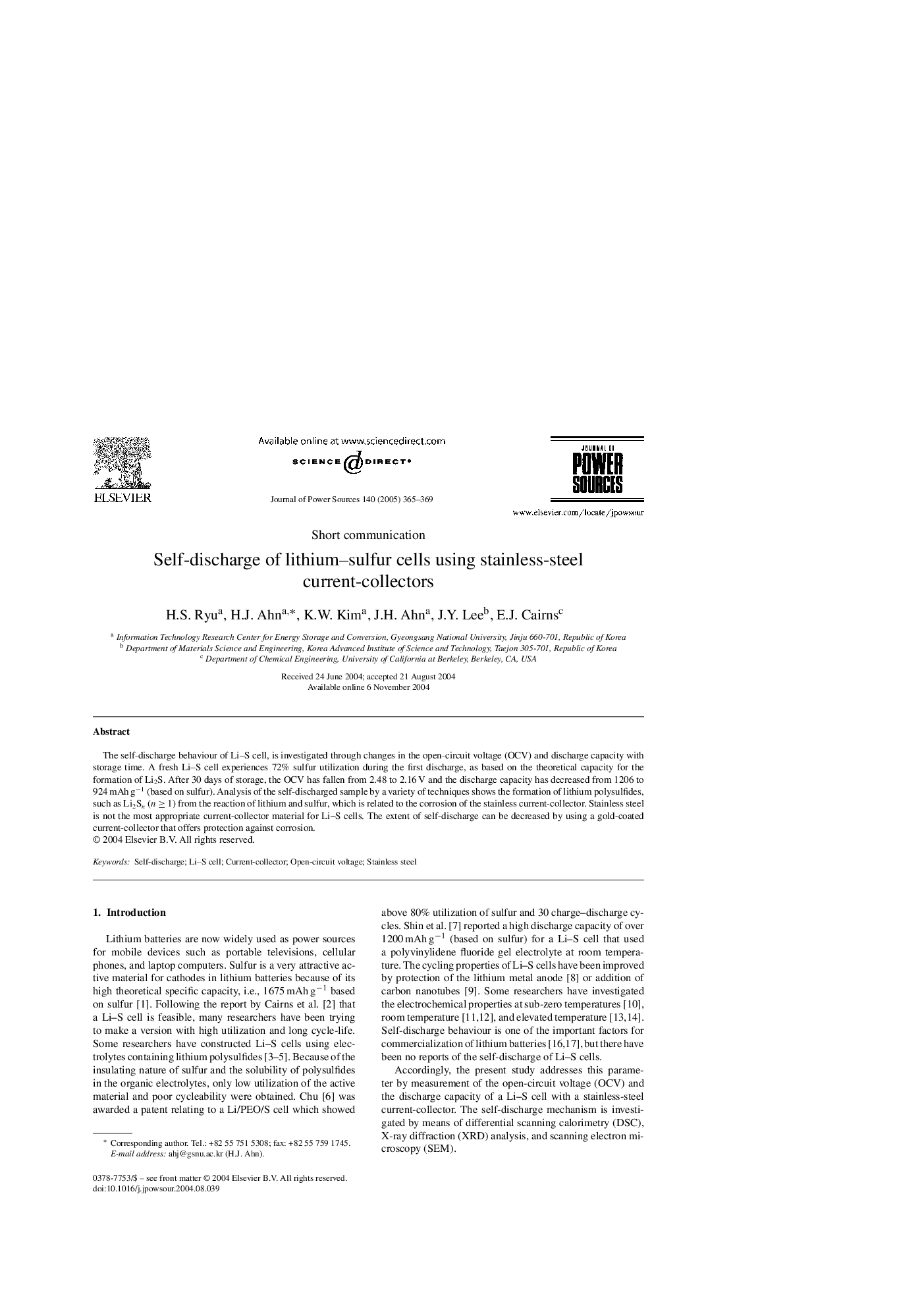| Article ID | Journal | Published Year | Pages | File Type |
|---|---|---|---|---|
| 9760479 | Journal of Power Sources | 2005 | 5 Pages |
Abstract
The self-discharge behaviour of Li-S cell, is investigated through changes in the open-circuit voltage (OCV) and discharge capacity with storage time. A fresh Li-S cell experiences 72% sulfur utilization during the first discharge, as based on the theoretical capacity for the formation of Li2S. After 30 days of storage, the OCV has fallen from 2.48 to 2.16 V and the discharge capacity has decreased from 1206 to 924 mAh gâ1 (based on sulfur). Analysis of the self-discharged sample by a variety of techniques shows the formation of lithium polysulfides, such as Li2Sn (n ⥠1) from the reaction of lithium and sulfur, which is related to the corrosion of the stainless current-collector. Stainless steel is not the most appropriate current-collector material for Li-S cells. The extent of self-discharge can be decreased by using a gold-coated current-collector that offers protection against corrosion.
Related Topics
Physical Sciences and Engineering
Chemistry
Electrochemistry
Authors
H.S. Ryu, H.J. Ahn, K.W. Kim, J.H. Ahn, J.Y. Lee, E.J. Cairns,
